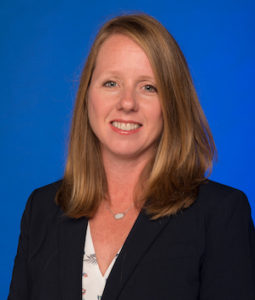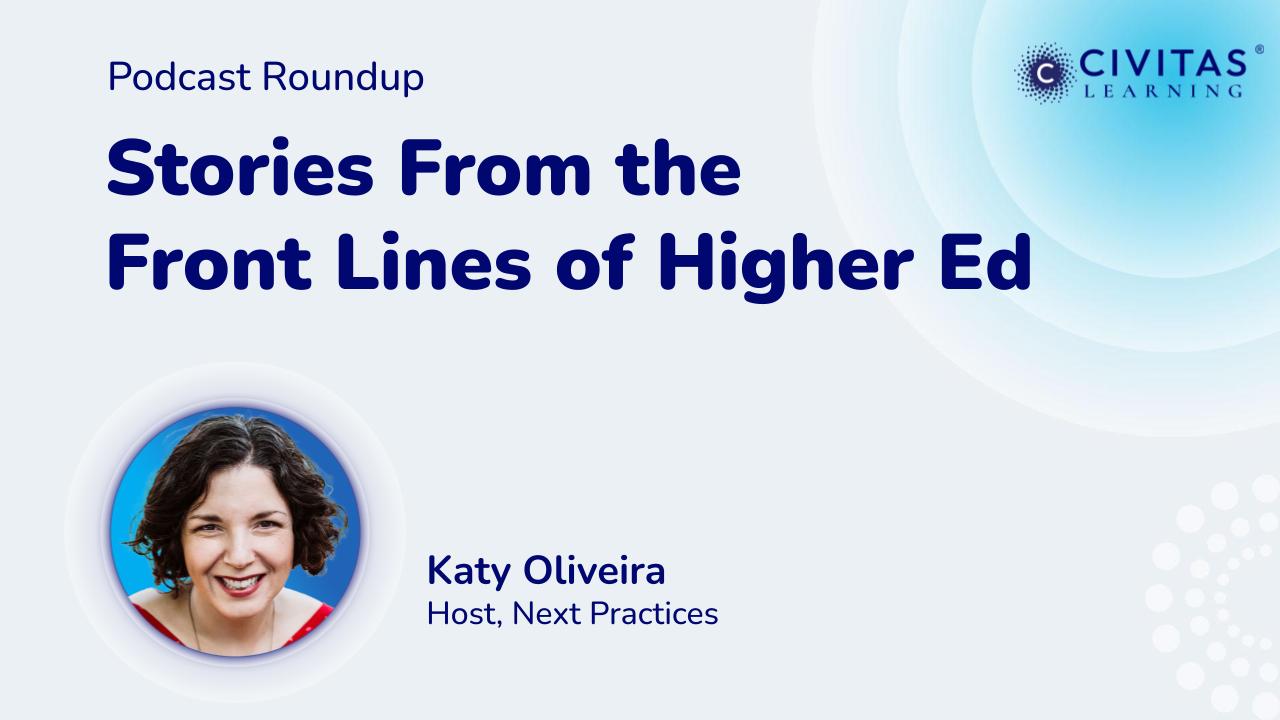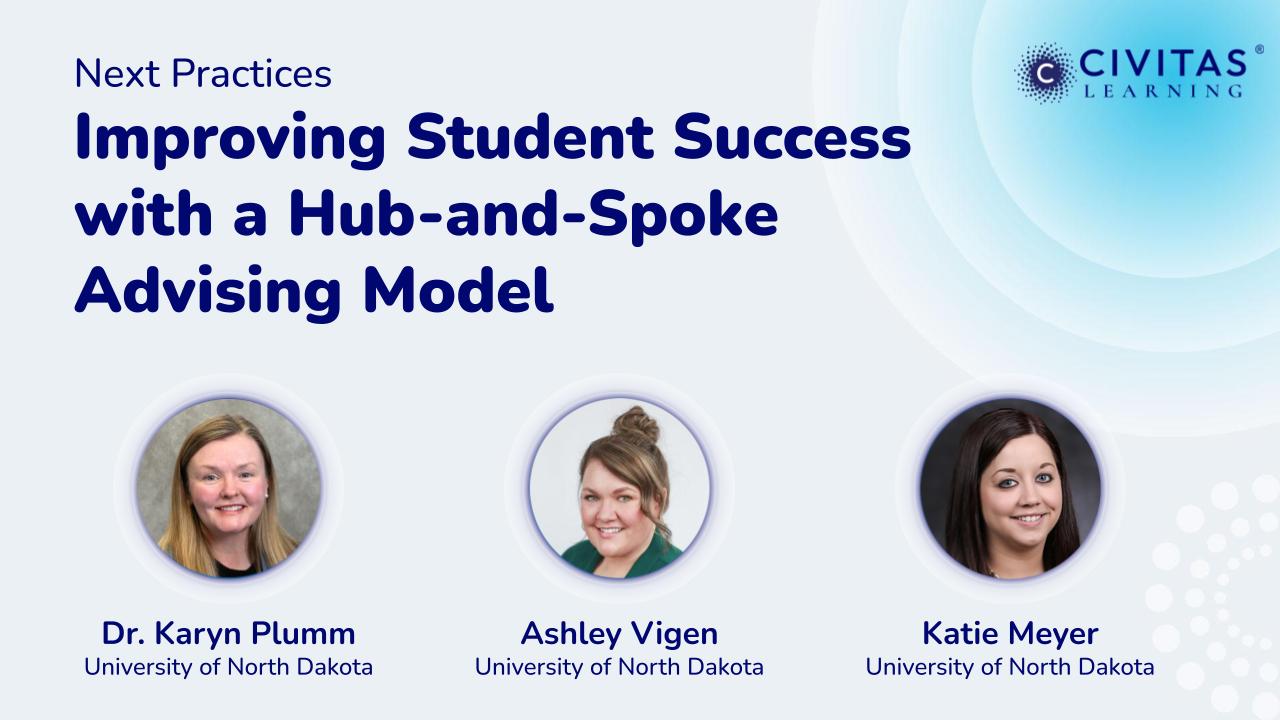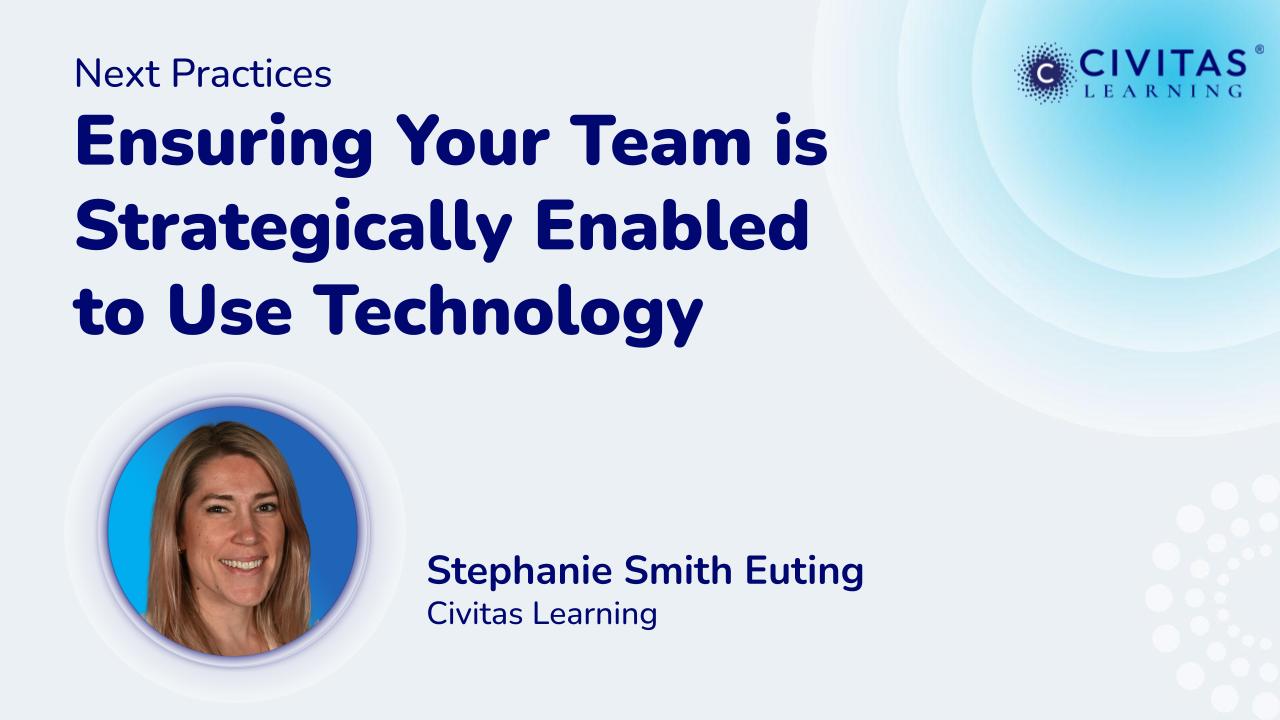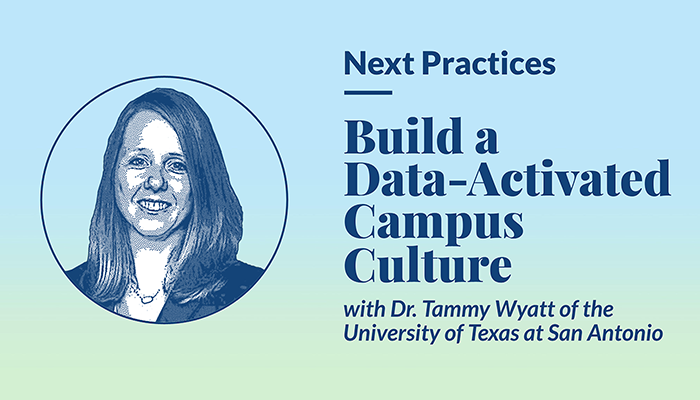
Build a Data-Activated Campus Culture with Dr. Tammy Wyatt
Share this Post
Subscribe: Spotify | Apple Podcasts | Youtube Music
In higher education institutions, we are all familiar with the need to use data. We know this, but in many ways, we could be letting some opportunities fall through the cracks due to the lack of collaboration and unified goals throughout an entire campus. The University of Texas at San Antonio has been refining its use of data for the last decade, and Dr. Tammy Wyatt joins the podcast today to share their approach and the results they’ve seen.
In this episode, Dr. Wyatt discusses building a student success coalition that incorporates everyone on campus, using data and analytics to unify institutional goals, and how access to actual data insights builds consensus and buy-in. She shares the step-by-step process for building a collaborative data-informed campus culture at your institution and how this can impact student success. We continue to explore how to use data-informed approaches to answer urgent questions and go beyond best practices in solving today’s higher ed challenges.
Show Notes:
- [2:12] – What are the most pressing challenges UTSA is working on solving?
- [3:30] – At UTSA, they are focusing on the positives that have come out of the pandemic, including being open to multiple modalities of learning.
- [4:47] – Everyone’s role across the institution is to help students succeed. Dr. Wyatt shares some of the strategies used at UTSA.
- [6:15] – A team works together to utilize student success technology tools to meet unified goals and approaches by assessing data together.
- [8:06] – The technology tools used are integral to their program.
- [9:01] – Dr. Wyatt describes the monthly meetings with the Student Success Team.
- [10:10] – No matter their major, all students have basic needs in higher ed.
- [11:48] – There are a lot of factors involved in creating this ecosystem.
- [13:35] – Rather than having redundancies and competition between colleges, UTSA has a unified approach. Dr. Wyatt shares examples of what changes she has seen.
- [16:14] – There is not a one-size-fits-all solution for all students. Using data to inform approaches can empower institutions to adapt and build upon best practices.
- [18:16] – Dr. Wyatt shares that there is always constant refining in goals and strategies all based on data.
- [20:50] – By seeing the visual data, it impacted support staff on the success of their work and where they could be doing more.
- [22:54] – It used to be more common for students to seek services themselves, but coming out of Covid and the varying needs of students, outreach is important.
- [24:36] – Rather than being reactive, using data has been used to be proactive.
- [26:28] – Dr. Wyatt shares the short-term results of their work.
- [28:56] – Using mid-term data, UTSA reached out to students over the phone to help students in need.
- [30:51] – Dr. Wyatt is very optimistic about their next outreaches based on the success of their call campaign following mid-terms.
- [33:26] – Work smarter, not harder. Use the data in front of you.
- [35:20] – Now, UTSA has made large-scale changes to cultivate a culture of data-inspired outreach. They are now working on refining.
- [37:37] – Dr. Wyatt shares the key takeaways of their approach at UTSA.
- [39:24] – Data can be used in real-time. There shouldn’t be any wasted time across campus.
- [41:40] – You can start by looking for low-hanging fruit and start to see momentum.
